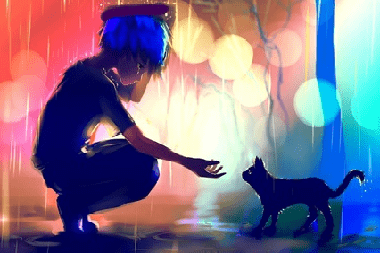Dermatology >>>> What disease is called "ringworm"?
What disease is called "ringworm"?

Under the very common phrase " ringworm " is meant several diseases caused by different microorganisms of a fungal nature. In the medical literature, fungal diseases of trichophytosis and microsporia are more likely to be found, and the name "shearing" is inspired by the external manifestations of these diseases, associated with breaking off hair at the locations of the mycelium of fungi.
Trichophytosis and microsporia have much in common in terms of the mechanism of infection, since both diseases are characterized by the presence of two groups of fungi. The carrier of one group of fungi is a person, and then they talk about anthropophilic fungi, and in the other case, both humans and animals are the carrier and source of infection, then we are talking about zoophilic fungi.
Trichophytosistolerated by mice, rats, cattle, horses, and microsporia can be obtained by close contact with cats and dogs. Understanding what kind of disease a person has will help a laboratory study of the mycelium found in scales and nails, or fungal spores on the hair. The presence of mycelium allows us to make a conclusion about the fungal nature of the disease, and a study of the location of spores on the hair clarifies the pathogen and defines the disease as trichophytosis or microsporia.
You can get infected with microsporia or trichophytosis from a person by violating the rules of personal hygiene: using other people's combs, other people's hats, linen, washcloths, towels, as well as swimming in a pool or a shared bath. As far as animals are concerned, close contact with a sick animal will inevitably lead to illness. In addition, animals molt, and the fungus tends to leave spores on the hairs of wool, which can get anywhere - on carpets, clothes, household items, and so on, and from there onto the human body. Trichophytosis, for example, can be contracted by turning over a haystack, since the hairs of rodents that have chosen the hayloft will fly in different directions.
Symptoms of "ringworm" (or as we found out: symptoms of microsporia and trichophytosis).
Since we all come from childhood, and animals have played and continue to play an important role in our life, giving us moments of joy, few can boast that they do not know how these diseases manifest themselves on the skin. But for those who have not yet had time to get sick, recall that "ringworm" can affect the scalp, body skin and nail plates.
On the smooth surface of the skin, the foci of infection resemble rings formed by small nodules, bubbles on the periphery, and in the center filled with scales. Outwardly, these rounded areas look like swollen pink "patches". It is enough to notice one such area and you need to immediately consult a doctor, since the disease spreads quickly, and the foci may become larger, and their locations are less convenient for treatment. As for the scalp, hair breaks off at the site of infection and forms sharply defined "bald" areas. The nail plates are affected by trichophytosis. The free edge of the nail becomes covered with gray - white spots and stripes, the nails thicken and begin to bulge, lose their smoothness, and break easily. There are no subjective sensations.
Treatment of "ringworm" (microsporia and trichophytosis).
Self-treatment is not recommended, since it is possible to bring the disease from one small focus to a large-scale spread of fungal spores. If the above-described swelling is found on the smooth surface of the skin, it is necessary to cover it with a piece of polyethylene and glue it around the perimeter with strips of adhesive plaster so that the water does not wash away the spores, and also to exclude the ingress of water on the affected hairy areas of the body (for example, on the scalp), and urgently go to examination. Treatment is prescribed depending on the location of the focus of infection, the severity of the course of the disease and its extent. In isolated cases, when the lesions are located on open areas of the skin not burdened with hairiness, local therapy is prescribed: ointments on a sulfur-salicylic basis (Yam), treated with an alcohol solution of iodine. In more difficult cases, griseofulvin inside. If there are contraindications to griseofulvin, the above local treatment is used. To gain access to the scalp, the lesion is treated with an epilin plaster or X-ray.
Prevention of "ringworm".
Prevention of microsporia and trichophytosis is simple, it is enough to be careful in terms of personal hygiene (do not use other people's household items) and be careful about communicating with animals. Pets should be periodically examined so as not to miss the moment of a single focus of infection, to bathe not in a shared bathroom, but in a special trough. If you are considering adopting an outdoor animal, go to your veterinarian and check for symptoms of ringworm and other dangerous diseases before taking it home. Children need to be taught the habit of not picking up street cats and dogs, and not stroking them.

Read

Read



























